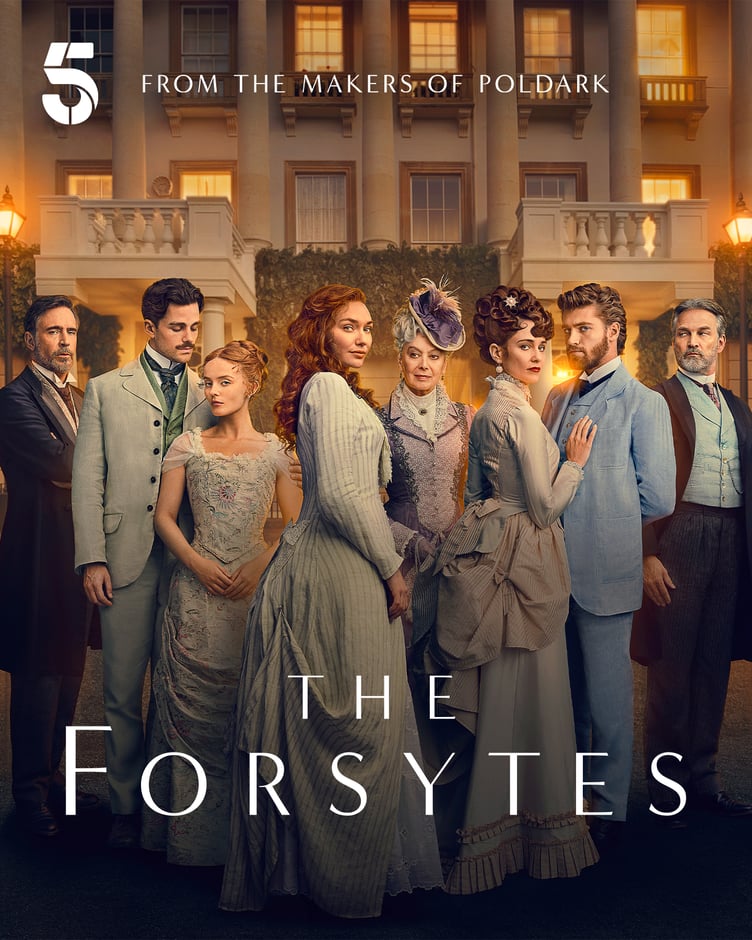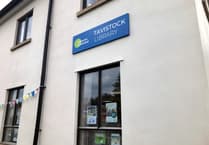Channel 5 tonight (Monday 20 October) launches The Forsytes, the latest adaptation of John Galsworthy’s seminal novels, brought to life by acclaimed screenwriter Debbie Horsfield. Set in late-Victorian London, this six-part saga recasts the familiar story with fresh vitality and, crucially, with far more attention paid to the women who influenced its world.
The original 1967 BBC production of The Forsyte Saga has been described as “the Downton Abbey of its day”. But while it captured the sweeping grandeur of Galsworthy’s family drama, many of its female characters were left in the margins. Horsfield’s version makes a decisive shift: this time, the women are no longer silent onlookers.
As Horsfield puts it: “The books are amazing, but they're very much written from a male perspective and the female characters are quite shadowy. I thought it was an opportunity to explore the hinterland of the female characters and redress the balance.”
Take Frances Forsyte, for example — a character almost incidental in the novels — who here is given scenes, motivation, and history rather than just a name in a family tree. Played by Millie Gibson (Doctor Who), her ambition and fire is not withered by her feminine anchor - rather the portrayal enhances the character. Then there is Irene Heron, traditionally described in terms of “beauty, outward charm, inscrutability”. Horsfield explains:
“I wanted to find something that expressed her passion so dance, in particular ballet, seemed a good way of articulating that.”
The cast seize these opportunities with relish. Justine Moore, a relatively new actress to a production of this scale, plays June with the enthusiasm you’d expect of an up-and-coming star. She balances the sheltered innocence of a young Forsyte daughter with the headstrong boldness that comes when youth mistakes certainty for wisdom. Her acting prowess is one to watch, and it’s exciting to imagine where the role could take her. “June is blindly confident in her decisions,” Moore said of her character. “A lot of the time, she is going to be proven wrong. But she’s brave.”
Eleanor Tomlinson, meanwhile, plays Louisa with grace and decorum, but there’s a glint behind the eyes — resilient, sharp-minded, and every bit as cut-throat as a Forsyte if pushed. “Louisa finds the right moment that will open the door to what she wants,” Tomlinson reflected, a quality she herself admired. On screen, it lends the dressmaker and former lover of Jolyon Forsyte a quiet steeliness.
But Horsfield’s commitment to female voices goes beyond the cameras. Lead director Meenu Gaur explains: “In Debbie’s iteration of the story, she has handed the reins of the storytelling to the women. Literally, in this case, by starting the story through Ann Forsyte’s voice-over and little June’s point of view.”
It’s a production shaped by women at every level — writing, directing, design — yet Horsfield is at pains to stress this isn’t a 2025 “woke-wash”.
“It’s not actually about placing [the women] at the forefront, it’s about giving them equal space to the men.”
And equal space means equal drama. Viewers still get the good stuff: the nitty-gritty of love and betrayal, the family feuds, the tussle between power and passion, and the sweeping grandeur of the Forsytes’ rise and fall. The men are as sharply drawn as ever — Joshua Orpin’s tightly wound Soames, Jack Davenport’s urbane James, and a family full of quarrelsome, flawed, magnetic men.
The addition of a female-led narrative adds depth to these virtues associated with the Forsytes, as the story explores these narratives socially but also within the women themselves as they navigate the reputed etiquette in a male-dominate society.
The production design is sumptuous, the cinematography polished, and the tension — between duty and desire, tradition and rebellion, possession and freedom — is baked in from the opening frames.
At its heart, this is still the story of the Forsytes: an upper-class family of new-money stockbrokers, their fortunes and failings, their inheritance and their affairs. What’s changed is the vantage point. What was once a male-centred chronicle of property and pride is now expanded into something richer, giving the women emotional weight and narrative power without sacrificing the sweep of the period saga.
In returning to Galsworthy, Horsfield and her team offer something that feels both familiar and new: the grandeur of the old saga, married to a sharper awareness of the stories previously left untold. For devotees of the original, this is an invitation to look again; for newcomers, it’s a glossy, compelling introduction to one of literature’s great dynasties.
And if the first instalment is anything to go by, the Forsyte women aren’t just visible — they’re unforgettable. This isn’t merely a revival. It’s a reinvention.
Perhaps it is time to admit that the Forsytes are all the better for letting the women steal the show.





Comments
This article has no comments yet. Be the first to leave a comment.